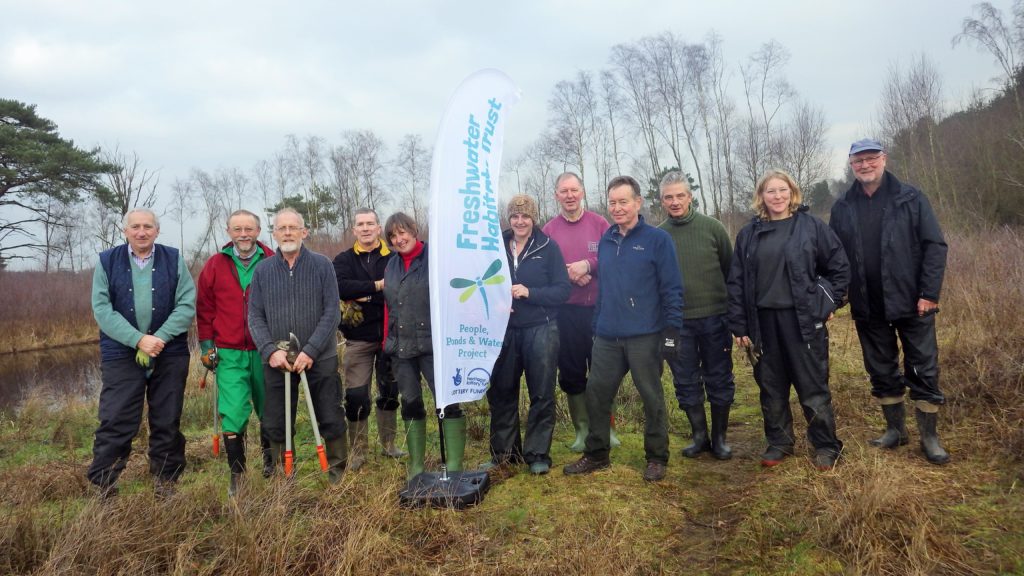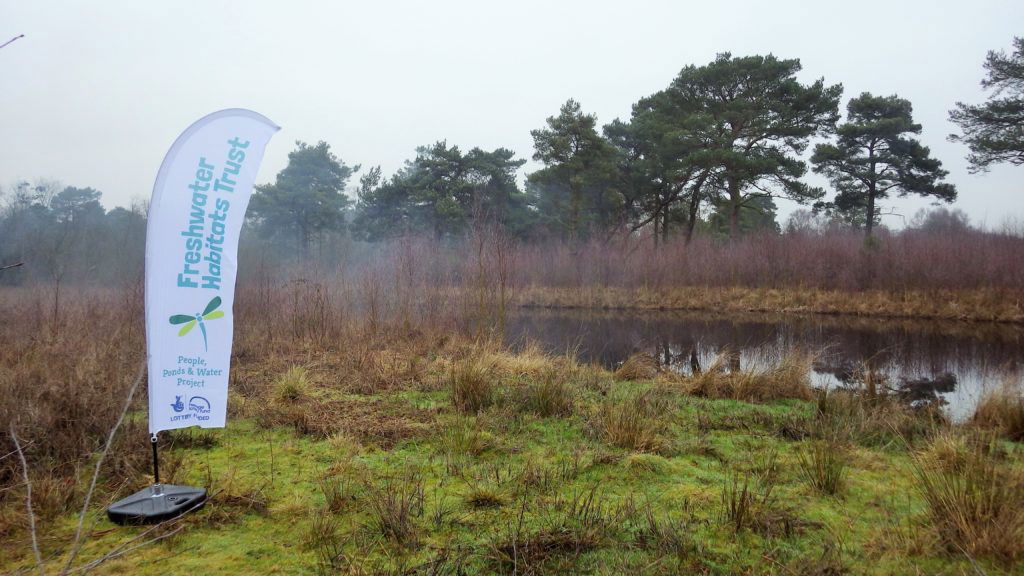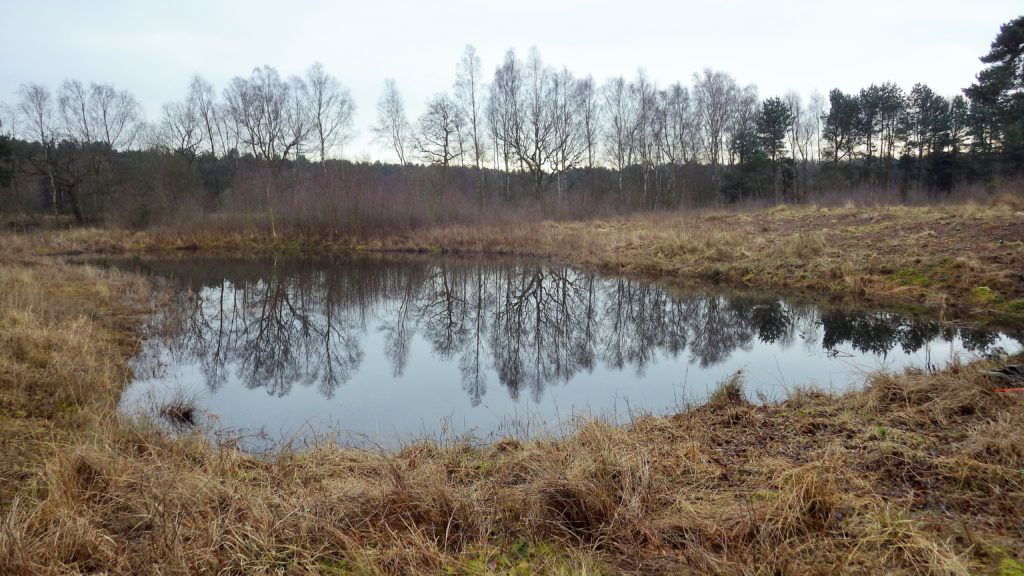Looking after World’s End 2017
2nd February 2017
People, Ponds & Water project officer Anne explains what’s going on at World’s End

World’s End, to the West of Strensall Common in York, is a Site of Importance for Nature Conservation (SINC), with a mosaic of fen meadow, acidic grassland, heathland and pond habitats. Over the last few years, however, the area has become increasingly overgrown with birch scrub, and the rich habitat, which is home to a wide range of fauna and flora is in serious danger of disappearing. Concerns over this encroachment has led to a series of nature driven groups to join forces to tackle the problem. Headed up by Freshwater Habitats Trust and the Yorkshire Branch of Butterfly Conservation, a program of work days have been organised throughout January, February and March 2017 to tackle the problem.
The site is particularly well known for dragonflies and scrub removal will prevent shading to ensure the ponds maintain their diversity of marginal and aquatic flora, allowing the greatest number of dragonfly species to breed at the site.
As well as the 5 common species of damselfly, both species of Red-eyed Damselfly (Erythromma Najas and Erythromma viridulum) are breeding making the site one of the most northerly in the U.K. for these species. Many of the commoner species of dragonfly occur including Brown Hawker (Aeshna grandis), Common Hawker (Aeshna juncea) and Ruddy Darter (Sympetrum sanguineum).
With regards to butterfly populations, the strong colony of Gatekeeper (Pyronia tithonus) at World’s End is at the northern edge of its distribution in mid-Yorkshire. Its northwards advance in the 1990s might have been halted by the higher ground rising onto the Howardian Hills, and World’s End could be a stepping-off point for future range expansion in this area.
For Lepidoptera, the main aim is maintain a mosaic of grassland and short- to medium-height scrubby patches. Thus Marbled White (Melanargia galathea) like coarse grassland, and Gatekeeper caterpillars live on grasses but the adult butterflies like nearby sunny scrub and hedgerows.
Although little is known about the moths at World’s End, the adjacent areas of Strensall Common hold an extremely rich moth fauna. A recent light-trapping event about 1 km from World’s End took the most species ever for one site in one night in Yorkshire. Strensall Common is the only known English site for the Dark Bordered Beauty (Epione vespertaria), an RDB species that is currently threatened, and World’s End might provide habitat for new colonies.
Pond wise the main species of interest is Pillwort (Pilularia glabulifera) a very distinctive little grass-like plant. It is in fact it an aquatic fern with thin, thread-like leaves which unfurl from tight coils as it grows, and hard spore cases – ‘the pills’. In the right conditions it forms a creeping mat over bare mud at the margins of ponds and lakes which can look like a miniature bright green lawn. Pillwort is a Priority Species for conservation in both England and Wales. It is declining rapidly throughout its north-west European range and the UK now holds a substantial proportion of the global population.

Pillwort was once abundant on Strensall Common however the species is rapidly declining with only a few ponds on the common now holding good populations. Pillwort is a specialist of bare pond edge habitats and thrives in areas of heathland and acid grassland. Although it hasn’t been recorded at World’s End, one of the ponds has been identified as good potential Pillwort habitat and as the plant is intolerant of shading from scrub, birch removal would increase the chances of Pillwort establishing. Opening up the pond edge will also encourage poaching and grazing by livestock which is the best form of sustainable management because it creates bare ground which the plant needs.

In January a total of 30 volunteers attended two work days, with several local conservation groups also getting involved. Freshwater Habitats Trust and Butterfly Conservation, were joined by members of Yorkshire Dragonfly Group, Yorkshire Mammal Group, Yorkshire Amphibian and Reptile Group, Friends of Rawcliffe Meadows, Friends of Skipwith Common and The River Foss Society. A great bit of teamwork.
If you’d like to join in the fun, the next task days are Saturday 11th February, Friday 24th February, Saturday 11th March and Friday 24th March. If you’d like to come along email Anne Heathcote on aheathcote@freshwaterhabitats.org.uk Also check out the Strensall Common, World’s End Facebook Group .
The Flagship Pond Project works with local communities and organisations to take care of our finest ponds. It is part of the People, Ponds & Water project funded by the Heritage Lottery Fund.
Want to know more?
- Read more about the Flagship Pond project
- Find out more about the 70 Flagship Pond sites we are working on across England and Wales
- Contact the team on peoplepondswater@freshwaterhabitats.org.uk to find out how you can help survey rare species and take care of our finest pond sites
